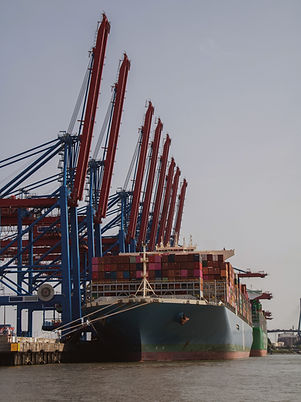Include Shipbuilding in the Defense Budget

By Jonathan Braun
The United States cannot remain a superpower without a shipbuilding industry.
For decades, Washington has watched—largely in silence—as America’s once-mighty commercial shipbuilding sector collapsed. Once the world’s leader in building cargo ships, tankers and ocean liners, the U.S. today barely registers in global shipyard statistics. Meanwhile, China—thanks to massive state subsidies, strategic planning and unwavering industrial policy—now accounts for more than 50% of global shipbuilding output. In the 1990s, its share was only a few percent.
This didn’t happen by accident. The U.S. allowed its steel industry to be hollowed out and stood by while shipbuilding migrated overseas, first to Japan and South Korea, and now decisively to China. And unlike other strategic sectors, we have yet to offer shipbuilding any meaningful path to revival.
It’s time to change that.
We live in a world of great power competition, and the oceans are again a contested domain. The Chinese shipbuilding industry isn’t just commercia. It’s integrated into China’s military and maritime strategy. Beijing can now rapidly convert commercial shipyards to military purposes, mass-produce warships and auxiliary vessels and control the world’s supply of everything from container ships to LNG carriers.
Even the humble shipping container tells the story. It’s an American invention and one of the most transformative innovations in global commerce and logistics. Malcolm McLean, a North Carolina trucking entrepreneur, invented and patented the modern intermodal shipping container in the 1950s. It reduced cargo loading time from days to hours, cut transport costs by up to 90% and enabled the rise of global supply chains.
In the 1990s, China produced just a fraction of the world’s containers. Today, it produces 96%. The U.S., once a steel and manufacturing powerhouse, no longer even makes the steel boxes that carry our goods across the seas.
Why? Because we ceded our steel industry, our shipyards and our industrial strategy to the false faith that markets alone would keep us strong.
China made a different choice. It treated shipbuilding as a national mission.
In contrast, the U.S. is not even building its own commercial fleet—and barely managing to sustain naval construction. The Navy relies on a handful of overstretched yards. In a war, we could not ramp up fast enough to replace lost ships, build logistics vessels, or support our allies.
We don’t just need more destroyers. We need tankers, ferries, dredges, icebreakers, and containers.
And we need them built in America.
There is only one realistic way to restore this vital industry:
Include commercial shipbuilding in the U.S. defense budget.
Not every ship needs to be a carrier or submarine. But in a national emergency, every American-built ship could serve military or civil defense purposes. Shipbuilding is strategic infrastructure—just like semiconductor fabs or rare earth processing plants.
We spend hundreds of billions on tanks, missiles, and fighter jets. But we balk at the cost of building cargo ships that carry fuel, grain, or troops—or that could be converted for humanitarian missions or national mobilization.
That is a failure of imagination that cries out for urgent correction.
Congress and the Department of Defense should: launch a National Shipbuilding and Maritime Resilience Program; treat U.S. shipyards and container production as defense industrial assets; fund dual-use commercial vessels built in America; offer long-term procurement contracts to restore shipyard workforces; rebuild our capability to produce steel shipping containers domestically; and reconnect American steel mills and shipyards into one unified national supply chain.
Without ships, you can’t trade, you can’t defend, and you can’t deliver.
If we’re serious about economic resilience, maritime power, and industrial strength, then we must act now, and put shipbuilding where it belongs: inside the defense budget.



